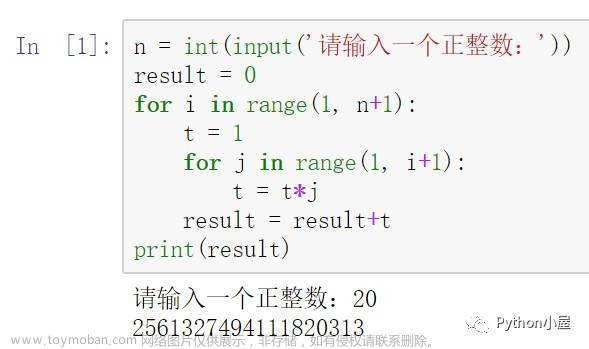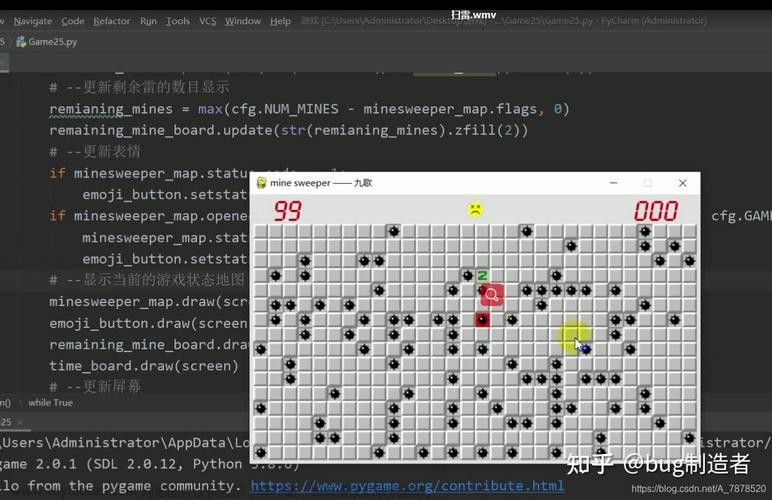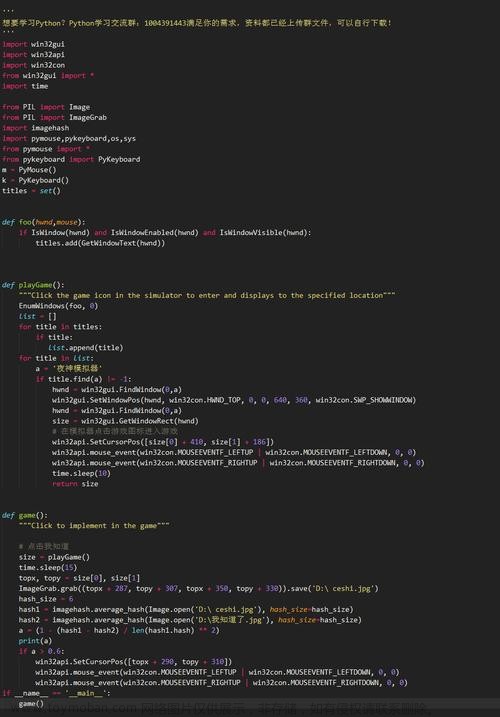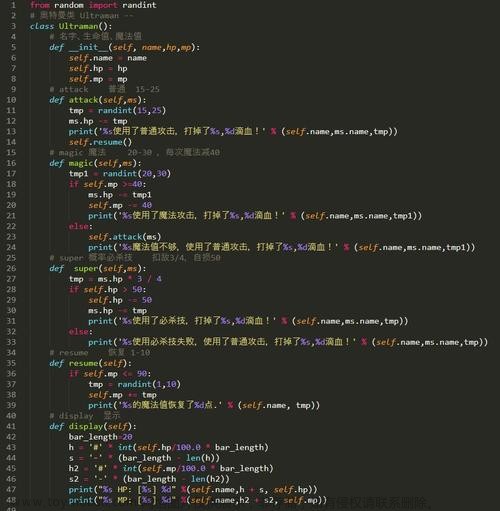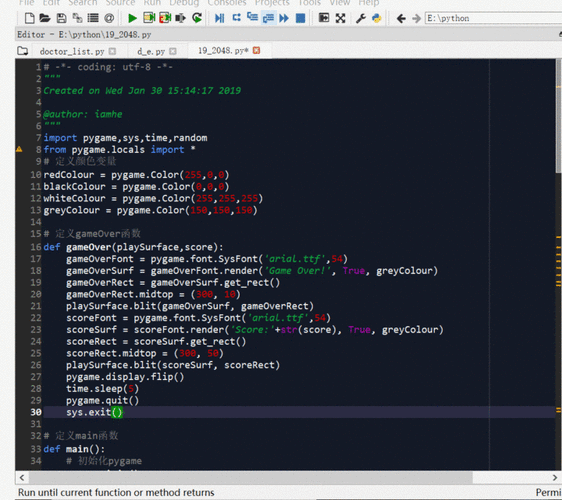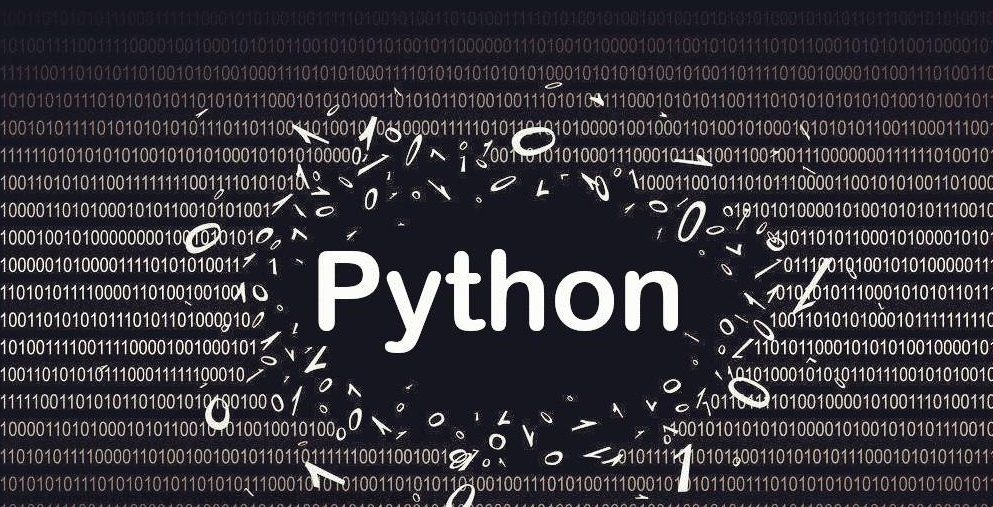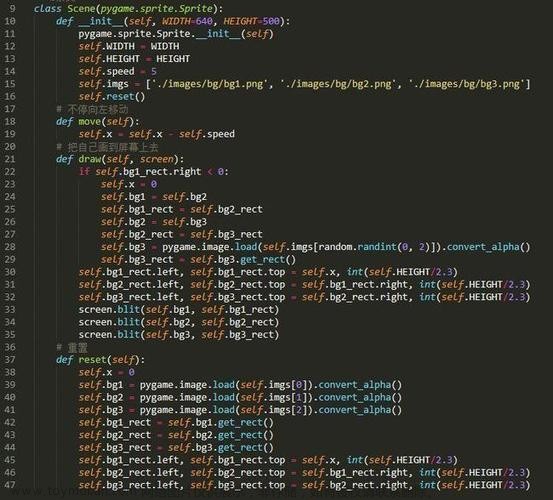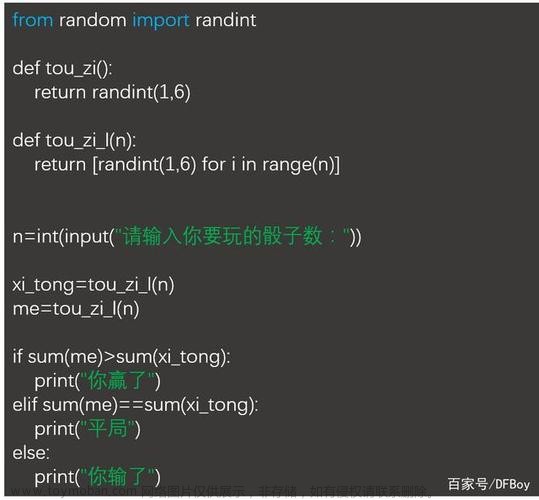Python,是一门充满灵性的编程语言,其简洁而强大的语法使得编写优雅代码变得轻松自如。本文将引领你穿越Python的奇妙世界,展示50个令人叹为观止的代码大全,助你在编程之路上更上一层楼。
Python代码大全
Python的美在于其简洁和表达力,以下是50个代码大全,为你展示编程之美的无穷可能。
1-10 Python入门之美
-
Hello, World! 你好,世界!
print("Hello, World!") -
变量交换
a, b = b, a -
列表推导式
squares = [x**2 for x in range(10)] -
lambda函数
add = lambda x, y: x + y -
列表切片
sublist = myList[1:5] -
元组解包
x, y, z = myTuple -
三元表达式
result = "Even" if num % 2 == 0 else "Odd" -
字典推导式
squares_dict = {x: x**2 for x in range(10)} -
集合
unique_numbers = set([1, 2, 3, 4, 4, 4, 5]) -
enumerate函数
for index, value in enumerate(myList): print(f"Index: {index}, Value: {value}")
11-20 Python数据之美
-
栈实现
stack = [] stack.append(item) popped_item = stack.pop() -
队列实现
from collections import deque queue = deque() queue.append(item) popped_item = queue.popleft() -
堆实现
import heapq heapq.heapify(myList) smallest = heapq.heappop(myList) -
默认字典
from collections import defaultdict d = defaultdict(int) -
Counter计数器
from collections import Counter counts = Counter(myList) -
命名元组
from collections import namedtuple Point = namedtuple('Point', ['x', 'y']) p = Point(1, 2) -
JSON转换
import json json_string = json.dumps(my_dict) -
文件读写
with open('file.txt', 'r') as file: content = file.read() -
递归
def factorial(n): return 1 if n == 0 else n * factorial(n-1) -
生成器表达式
squares_gen = (x**2 for x in range(10))
21-30 Python函数式编程之美
-
map函数
doubled_numbers = list(map(lambda x: x * 2, my_numbers)) -
filter函数
even_numbers = list(filter(lambda x: x % 2 == 0, my_numbers)) -
reduce函数
from functools import reduce product = reduce(lambda x, y: x * y, my_numbers) -
装饰器
def my_decorator(func): def wrapper(): print("Something is happening before the function is called.") func() print("Something is happening after the function is called.") return wrapper @my_decorator def say_hello(): print("Hello!") -
偏函数
from functools import partial multiply_by_two = partial(lambda x, y: x * y, 2) result = multiply_by_two(5) -
生成器函数
def fibonacci(): a, b = 0, 1 while True: yield a a, b = b, a + b -
闭包
def outer_function(x): def inner_function(y): return x + y return inner_function add_five = outer_function(5) result = add_five(3) -
函数参数解构
def print_person_info(name, age): print(f"Name: {name}, Age: {age}") person = {"name": "Alice", "age": 30} print_person_info(**person) -
匿名函数
add = lambda x, y: x + y -
函数注解
def greet(name: str) -> str: return f"Hello, {name}!" result = greet("Alice")
31-40 Python面向对象之美
-
类与对象
class Car: def __init__(self, brand, model): self.brand = brand self.model = model my_car = Car("Toyota", "Camry") -
继承与多态
class Animal: def speak(self): pass class Dog(Animal): def speak(self): return "Woof!" class Cat(Animal): def speak(self): return "Meow!" my_dog = Dog() my_cat = Cat() -
抽象类与接口
from abc import ABC, abstractmethod class Shape(ABC): @abstractmethod def area(self): pass class Circle(Shape): def area(self): pass -
属性封装
class Person: def __init__(self, name, age): self._name = name self._age = age @property def name(self): return self._name @property def age(self): return self._age -
类方法与静态方法
class MathOperations: @staticmethod def add(x, y): return x + y @classmethod def multiply(cls, x, y): return x * y -
属性装饰器
class Circle: def __init__(self, radius): self._radius = radius @property def radius(self): return self._radius @radius.setter def radius(self, value): if value < 0: raise ValueError("Radius cannot be negative.") self._radius = value -
多重继承
class A: pass class B: pass class C(A, B): pass -
Mixin模式
class JSONMixin: def to_json(self): import json return json.dumps(self.__dict__) class Person(JSONMixin): def __init__(self, name, age): self.name = name self.age = age -
元类
class Meta(type): def __new__(cls, name, bases, attrs): # Custom logic here return super().__new__(cls, name, bases, attrs) class MyClass(metaclass=Meta): pass -
单例模式
class Singleton: _instance = None def __new__(cls): if cls._instance is None: cls._instance = super().__new__(cls) return cls._instance
41-50 Python实用技巧之美
-
反向迭代
reversed_list = my_list[::-1] -
列表拆分
chunks = [my_list[i:i+chunk_size] for i in range(0, len(my_list), chunk_size)] -
链式比较
if 1 < x < 10: print("x is between 1 and 10") -
集合运算
intersection = set1 & set2 union = set1 | set2 difference = set1 - set2 -
一行代码实现FizzBuzz
fizzbuzz = ["Fizz"*(i%3==0) + "Buzz"*(i%5==0) or i for i in range(1, 101)] -
字典默认值
my_dict = {"a": 1, "b": 2} value = my_dict.get("c", 0) -
合并字典
merged_dict = {**dict1, **dict2} -
查找最大值和索引
max_value = max(my_list) index_of_max = my_list.index(max_value) -
链式函数调用
result = my_function().do_something().do_another_thing() -
打印进度条
import sys sys.stdout.write("[%-20s] %d%%" % ('='*progress, progress*5)) sys.stdout.flush()
结尾
感谢你一路走来,探索这50个Python代码之美。这些代码展示了Python的多面魅力,从基础入门到高级技巧,每一行代码都是编程之旅中的一颗璀璨明珠。文章来源:https://www.toymoban.com/news/detail-793018.html
希望这篇博客激发了你对Python的兴趣,让你在编程的海洋中畅游愉快。感谢你的阅读,期待与你在下次的冒险中再相遇!🚀🐍文章来源地址https://www.toymoban.com/news/detail-793018.html
到了这里,关于Python之巅:探索50个代码大全的文章就介绍完了。如果您还想了解更多内容,请在右上角搜索TOY模板网以前的文章或继续浏览下面的相关文章,希望大家以后多多支持TOY模板网!

